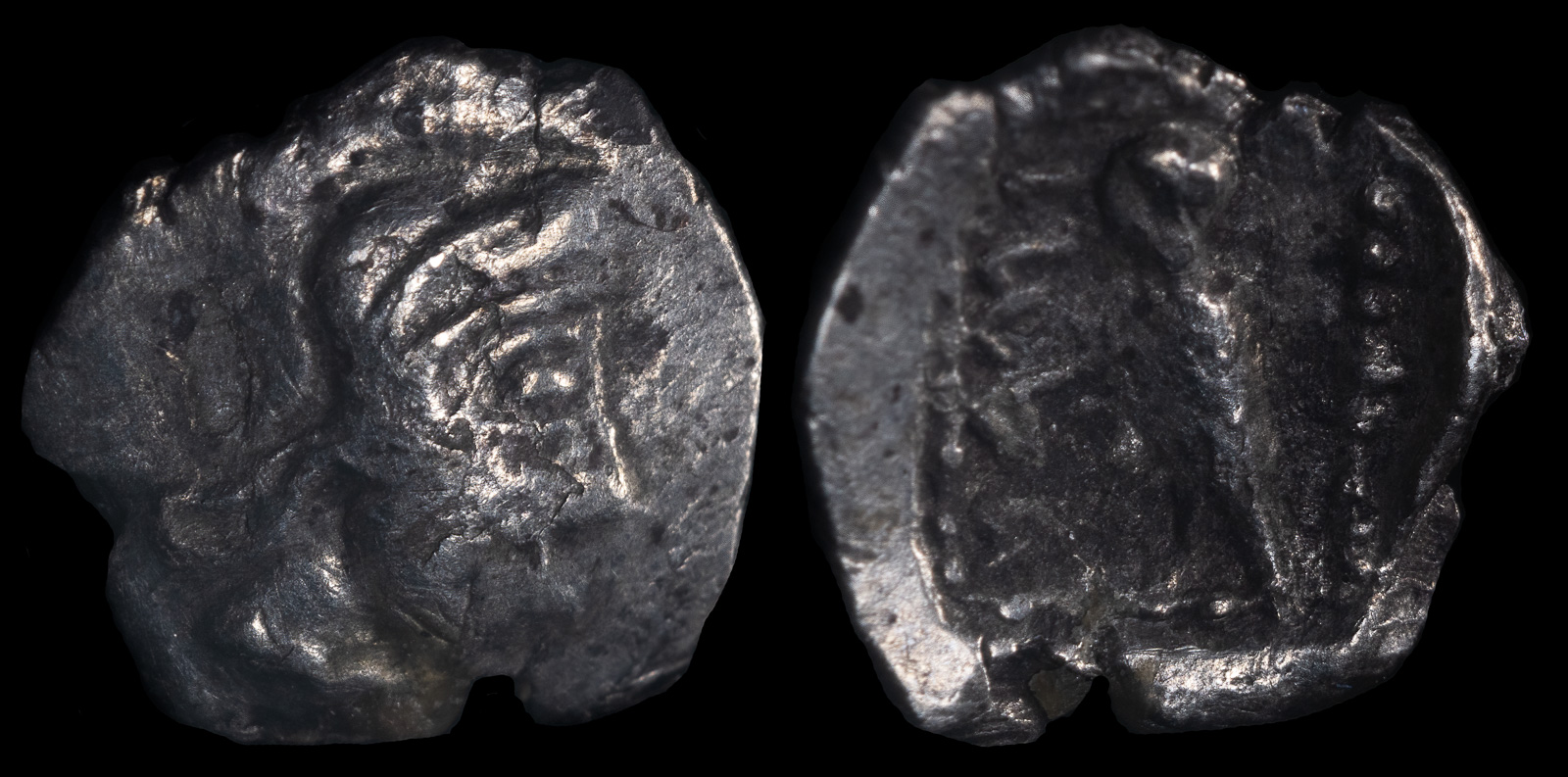
Northern Arabia(?)
Circa 4th-3rd centuries BCE
AR Tetartamorion .14g, 6.5mm
Helmeted head of Athena right.
Owl standing left, Paleo-Hebrew text to left. GSRK?
Huth & Qedar 1999 27-8
The first thing on this coin that I zeroed in on was the inscription. If I solved that, then I’d have a much better idea. The style itself certainly reminded me of Hezekiah, but there are a number of important differences.
One thing that I’d come to realize is there were many different “styles” of Aramaic at the time. This has made it a major pain to make out the inscriptions, so I started a simple database of letters taken from coins. It was very instructive in that it made things painfully clear to me how the Aramaic script varied from Egypt to Samaria to Mesopotamia. However, to my annoyance, I still had difficulties deciphering it. There was just no good match.
I made a “mini-breakthrough” from one of the few numismatic books I own. Just before I left on vacation, I ordered a copy of Meshorer & Qedar’s Samarian Coinage, because I have a number of Samarian coins on the way. Although I’ve just started reading it, I quickly learned two things.
“Not only do some of the coins bear Paleo-Hebrew letters, but the mixed nature of the inscriptions is evident. BDYH, one of the governors of Samaria, has his name written on one of his coins in Paleo-Hebrew script, but on others in Aramaic script.”
The other thing is on pages 78-79 they have a nice table of Aramaic letters found on Samarian coins, which has removed the need for me to take my letter database much further.
However, the user of paleo-Hebrew intrigued me. I was aware of it from Hasmonean coins, but I had no idea it was used on some 4th century BCE coinage. I was even less aware that it was intermixed with imperial Aramaic at the time. So, upon looking up the paleo-aramaic alphabet, I found that my coin was a decent match. The letters appear to be either GSRK or GSDK. The letters R and D are very similar and I’m not as certain about the K, but the G and S are pretty clear.
Given that the inscription certainly resembles proto-Hebrew, I next wondered how widespread was it at the time. Obviously it was used in Judea and Samaria, but could it have been in use further? My search brought me to an extremely interesting paper.
“Apart from these North Arabian coins and the abundant coinages in imitation of Athenian types from Palestine and South Arabia there are two more groups of Athenian imitations from the Arabian peninsula that can be placed in a chronological and economic context with the other coinages of the incense road. We know of four silver ‘drachms’ which share a certain similarity in style with the coin we described at the beginning of this paper. The first known piece of this group was illustrated by de Morgan (who had acquired it in Mascat) and subsequently by BMC Arabia (PL 27, 7). It, too, shows a ‘crest’ of annulets on Athena’s head, and the way in which the owl
is depicted with only a few dots and strokes is very similar. But this and the other three coins of this group are distinctly different in that the owl is rendered in incuse and bordered by inscriptions in an undeciphered script which is neither Aramaic nor South Arabian (PI. 27, 8-9). The technique of rendering an image partly in incuse was employed during the early period of the coinage of the Phoenician city-states during the fifth century BC. In view of the provenance of de Morgan’s specimen and the similarities with the coin reportedly found in southern Jordan, we attribute this group of Athenian imitations very tentatively to northern Arabia. “
For now, I will label the coin as “North Arabia”, but I’m still not entirely sure. The designs are similar, but I’m not sure the script is the same. If mine is Paleo-Hebrew, or some close variant of it, perhaps it originated closer to Judea?
Relevant Resources